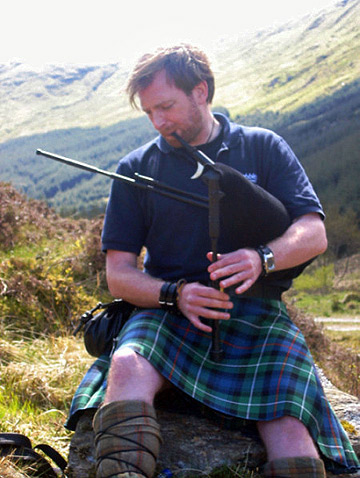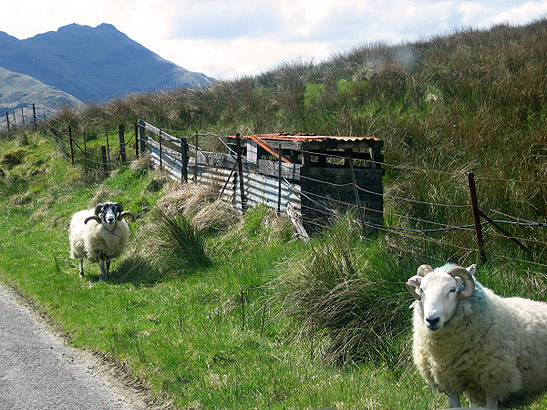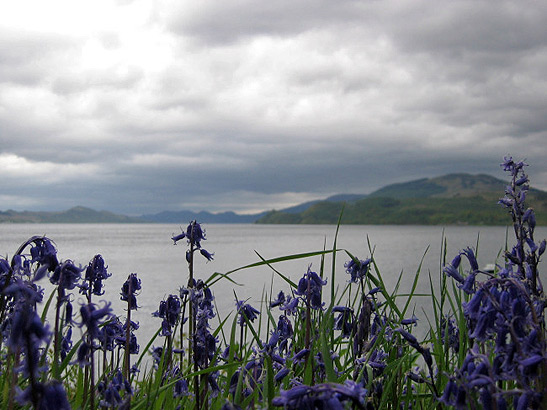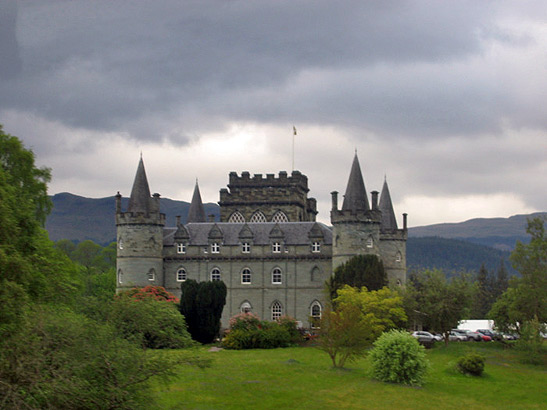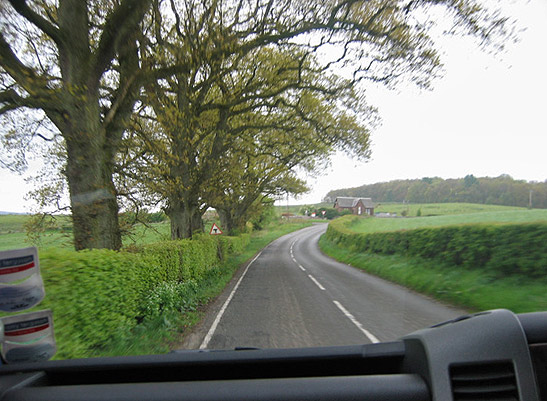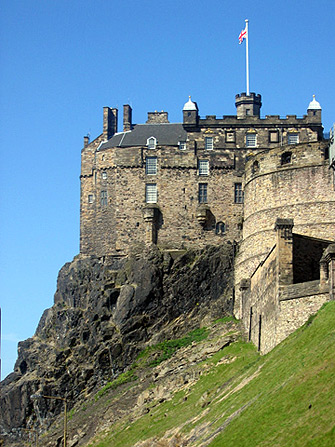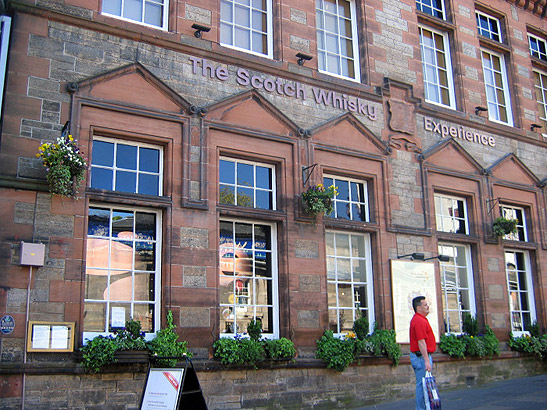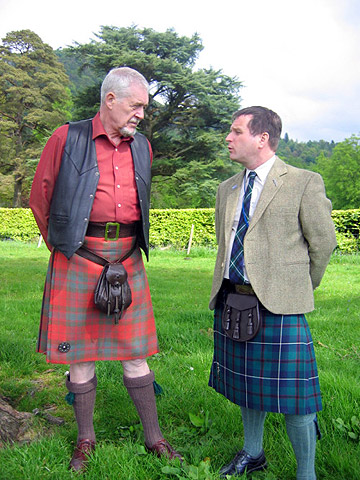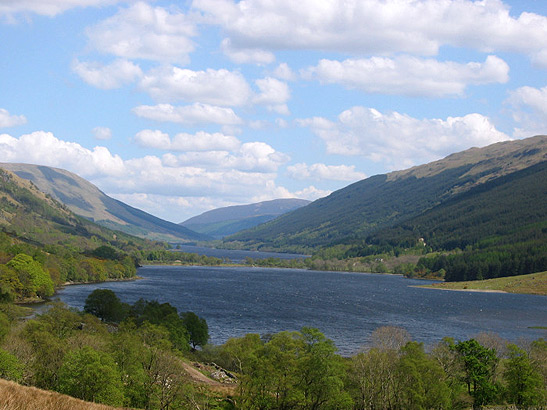 |
 |
|
 |

|
Hopscotching Around
Scotland
Story and photos by John Blanchette “Then let us toast John Barleycorn,
Along with its writers and poets, Scotland is known for its architects and designers, inventors who helped launch the Industrial Revolution, like Lord Kelvin and James Watt and, of course, it’s the home of golf. I got to the gathering early and decided to celebrate my favorite part of Scotland, its whisky (spelled with no “e” in Scotland, from the Gaelic for “water of life”). About five million Scots inhabit the country that caps Great Britain, along with 20 million sheep and 107 commercial distilleries, which I did my best to sample.
I found that I have an affinity for the peaty whiskies produced in the Highlands, Islay, Speyside and the Islands. There is no arguing when it comes to matters of taste. Others can enjoy the Lowland’s whiskies with their balanced food-friendly, un-peated “caramel centers,” I’ll take the smoky giants that distinguish Scotch whiskies from the rest of the spirit world. I visited in mid-May. Spring anointed the landscape with shades of radiant green, yellow gorse was in bloom and the Scottish national flower, bluebells, carpeted the forests, hills and lake shores.
I was attending the Spirit of the West Whisky Festival, held on the grounds of the Duke of Argyll’s castle in Inveraray. The country’s best single malt whiskies were being tasted and I threw myself into the task, sampling such great ones as Oban, Talisker, Ardbeg, Caol Ila, Bowmore, Laphroaig, Lagavulin, Bruichladdich and Dalwhinnie.
My favorite is one that just become available in the United States, aged in Bourbon casks and in limited supply, a beautifully balanced whisky from Kilchoman in Islay, the most westerly distillery in Scotland. Like American moonshine stills, Scottish distilleries were primarily erected in remote untraveled areas, not as the whisky makers would have you believe, for the pure waters filtered through the stony soils of the highland glens, but more probably to evade the tax revenuers and government officials. To this day Scotch is heavily taxed, about 75%, and is usually cheaper to purchase in America than in Scotland.
American Bourbon owes its existence to early Scottish settlers in Tennessee and Kentucky who set up stills hidden away in the rural mountain hollows of Appalachia. They created a distillate based on corn mash and rye rather than malted barley, which accounts for the difference in flavor. In 1797 George Washington’s farm foreman, a Scotsman, set up five pot stills at Mount Vernon, and whiskey became George’s most profitable product, earning him 60 cents a gallon.
The distance between Edinburgh and Glasgow is about 40 miles by road. When you travel by Loch Lomond near Glasgow, look for Glengoyne Distillery, a good place to learn about Scotch whisky. They present a slide show at the Visitor’s Center and a chance to blend your own personal bottle using whiskies from all the different areas. Mine had a definite north and west influence. When I open my bottle it will be with the Scottish toast, Slainte Mhath! “Drink to good health” (pronounced “slan-ja var”).
If You Go If you’ve got any Scottish blood, you can search for ancestors at the People’s Center in Edinburgh, scanning through church logbooks and computer data. In Glasgow make a pilgrimage to the Willow Tea Room, created in 1904 by Scotland’s most renowned designer, Charles Rennie Mackintosh. He designed everything including the windows, furniture, lighting, even the silverware. You must try the haggis here with the “taters and neeps” (potatoes and turnips), $10. Haggis is the national dish of Scotland; sausage made of ground offal and oats, spiced like Sheppard’s pie and cooked inside a sheep’s stomach. Better than it sounds. Restaurants and Hotels Hotel Missoni is an ultra modern Italian-designed building that has just opened in a prominent location at the head of the Royal Mile. Forth Floor Restaurant in Edinburgh offers traditional fare. The Inn at Inverbeg has a wide view of Loch Lomond and nearby Mr. C’s Fish and Whisky Bar has great fish and chips. Creggans Inn on the shores of Loch Fyne in Argyll serves lightly kippered herring from the loch's tidal waters. Gill and Archie MacLellan run the family business, helped by their sweet young children. They have an excellent chef and the historic country inn has lake views, a lovely garden and access to free internet. For a true Highland inn experience head for Balquhidder Glen, and Monachyle Mhor, which sits overlooking Loch Voil.
This is a spectacular 2,000-acre farm that raises much of the food served in the restaurant including lamb, pork, fish, chicken, eggs, beef and the occasional red deer, harvested in the glens as part of the sustainable management program because wolves were systematically eliminated in most of Scotland. Owner Tom Lewis is a legendary chef and raconteur who will endlessly entertain with his wit and stories. In town the family also owns an organic bread bakery that uses the farms meats in its pies, and a nearby fish market and “chipper.” In Glasgow, the Malmaison Hotel Arts and Crafts interior inhabits a former Greek Orthodox Church. It features a Champagne bar and smart restaurant. One of the best meals I had was at La Vallee Blanche in Glasgow on Byres Road near the university. Walk around before or after dinner and grab a drink at one of the student hangouts on Ashton Lane. There are a number of Celtic music, arts and crafts
festivals held throughout the year. Edinburgh’s summer arts festival
is renowned and whisky events are always on the calendar. For information
on travel accommodations, special events, sightseeing, dining options,
bargain hunting, etc., contact www.cometoscotland.com. |
|
Feedback for South of the Border Wine Country Hello John – I enjoyed reading your article. I live in
La Bufadora and have friends visiting next week, so you have given me some good
tips on where to go in our wine country. We have always called Cetto –
L.A. (like Los Angeles) Chet-o and it might have been worth mentioning that
it is actually Italian in origin. Also, I don't know about when visiting the
Valle, but when in town, it is better to have pesos than dollars. Right now
the rate is approx. 11.70 for each dollar. Just sayin' and like I said good
article!
Hi, We here at Country Living Magazine are working on a story about hotels around the US. We would like to feature the Paso Robles Inn. I have to find photos to go along with the story. I was wondering if you could please send me any images of the hotel. This can be anything from the rooms to the food! All images can be submitted low res and if selected I will ask for hi rez later. Also, if you know of any photographers that have photographed the hotel can you please give me the contact info? Thank you so much! --- Will Morel, Assistant Photo Editor, Country Living Magazine, New York, NY
I am looking forward to my "silver" years, which in my case, will be the years (if fate is good to me) that I will finally be traveling. New Zealand is at the top of the list - I have always been drawn to it. --- Sandra Mines, Seattle, WA
Yes, was a fun city. Bad wine though. --- Bo, Portland, OR
|
This site is designed and maintained by WYNK Marketing. Send all technical issues to: support@wynkmarketing.com

|











